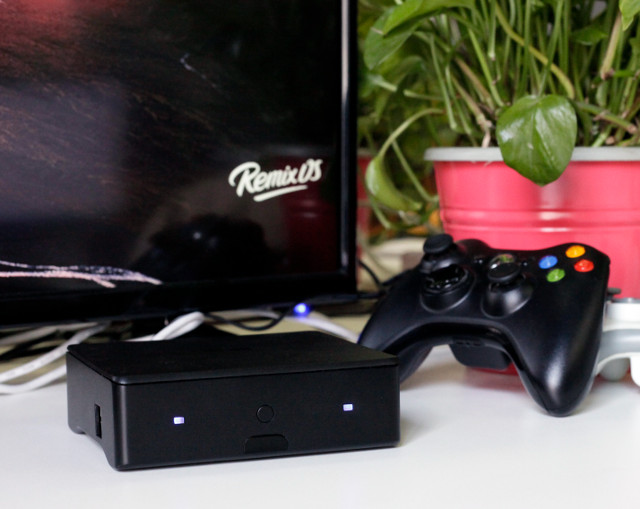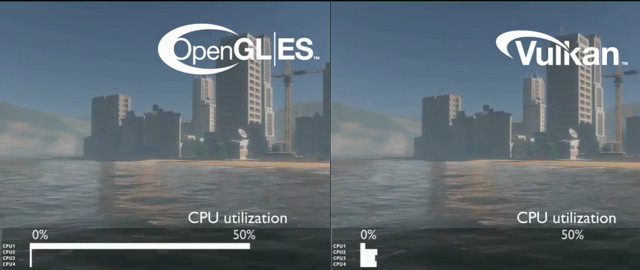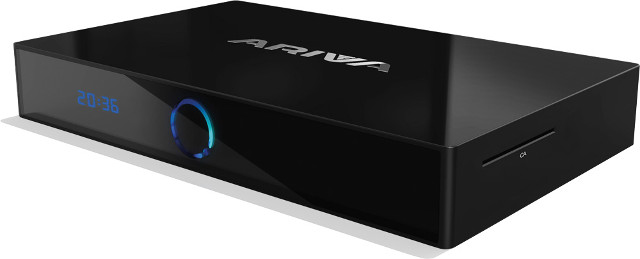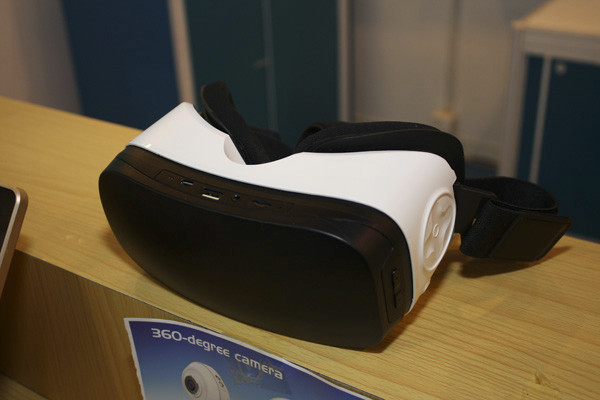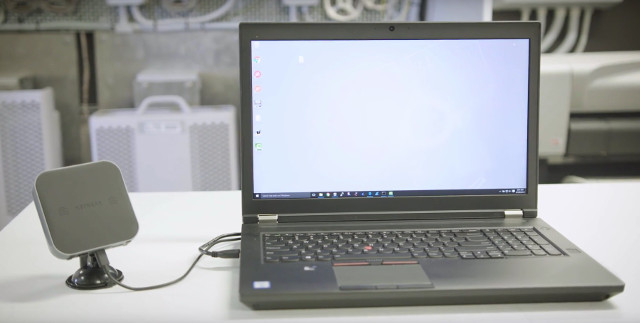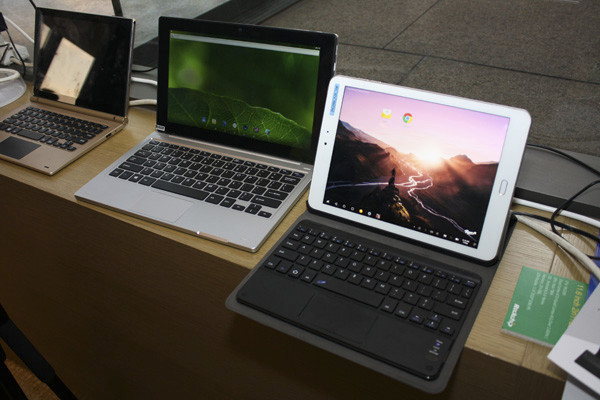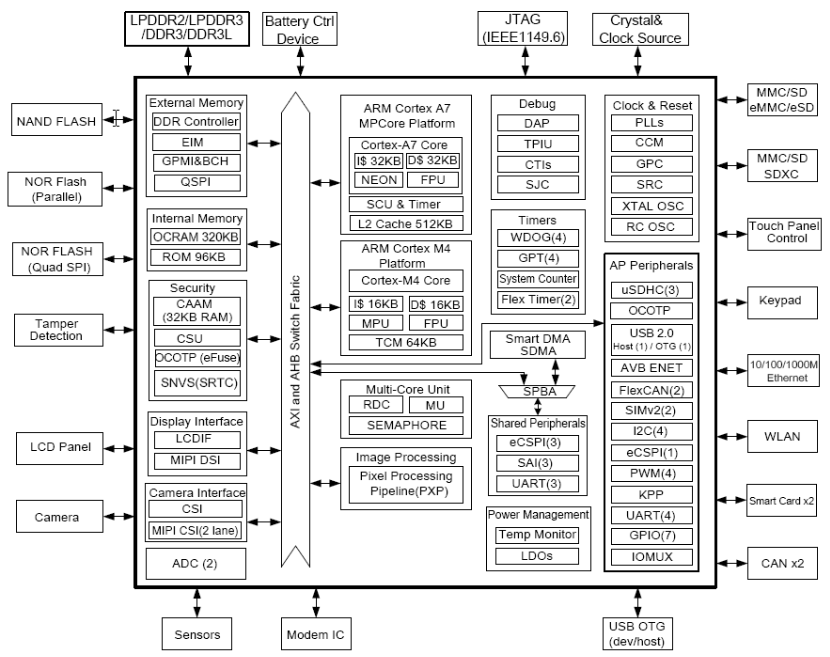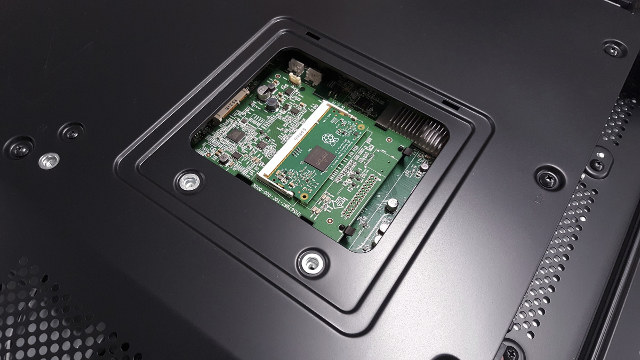You can use any Android TV box to watch movies on your TV, play some games as you would on a game console, and perform tasks such as checking email, browsing the web or editing documents like you’d do on your computer. However, this is not always as straightforward and/or user-friendly as it could be, so Jide Technology worked on Remix OS, a fork of Android, to make the experience more PC-like when needed. Recently they’ve also worked on improving gaming and a TV interface, and the company has now launched a new Kickstarter campaign for Remix IO Android mini PC based on Android 7.0 and including software improvements to create an all-in-one device acting as a TV box, mini PC, or game console. Remix IO specifications: SoC – Rockchip RK3368 Octa-Core ARM Cortex-A53 processor @ 1.5GHz with Imagination PowerVR SGX6110 GPU System Memory – 2GB DDR3L Storage – 16GB […]
This Video Shows Vulkan API’s Higher Power Efficiency Compared to OpenGL ES API on ARM SoCs
Vulkan was introduced as the successor of OpenGL ES in March 2015, promising to take less CPU resources, and support multiple command buffers that can be created in parallel and distributed over several cores, at the cost of slightly more complex application programming since less software work in done inside the GPU drivers themselves with app developers needing to handle memory allocation and thread management. This was just a standard at the time, so it still needed some time to implement Vulkan, and work is still in program but ARM showcased the power efficiency of Vulkan over OpenGL ES in the video embedded at the end of this post. The demo has the same graphics details and performance using both OpenGL ES and Vulkan, but since the load on the CPU in that demo can be distributed over several CPU cores with Vulkan against a single core for OpenGL ES, […]
Ferguson Ariva 4K Android STBs Come with Digital TV Tuners, a Pay TV Card Reader, and a SATA Bay
We already have a choice of Android TV boxes with digital TV tuners (DVB-T2, DVB-S2, ATSC…) with devices like K1 Plus T2 S2, U4 Quad Hybrid, and Wetek Play 2, but Ferguson, a company based in Poland, has two other options based on Amlogic S905 processors with their Ariva 4K and Ariva 4K Combo with one or two tuners, a Pay TV card reader which is not available on competitors’ models, and 2.5″ HDD bay in the bottom of the case implemented via a USB 2.0 to SATA bridge. Ariva 4K & 4K Combo specifications: SoC – Amlogic S905-B quad core ARM Cortex-A53 @ up to 1.5 GHz with Mali-450MP GPU System Memory – 1 GB DDR3 Storage – 8 GB eMMC flash + slot for HDD mounting (on the bottom) + micro SD card slot Video Output – HDMI 2.0 up to 4K @ 60Hz and AV port Audio […]
PiPo V5 Android Virtual Reality Headset Powered by Rockchip RK3399 SoC to Sell for $200
Las month I reviewed VR SKY CX-V3 Android virtual reality headset based on Allwinner H8vr octa-core SoC, and based on a report from Netbook Italia at the Hong Kong Electronics Fair, PiPo will launch a device looking exactly the same but featuring a much more powerful Rockchip RK3399 processor, next month for about $200. Beside Rockchip RK3399 hexa-core SoC with two cores ARM Cortex-A72 cores and four Cortex-A53, and a Mali-T864MP4 graphics, Pipo V5 VR headset will support 4K video with HEVC/H.265, H.264 and VP9 video codec support, features 2GB RAM, 32GB storage, one USB type C port, one USB 2.0 host port, a microSD slot, an audio jack, and a 5.5″ Full HD (1920×1080) IPS display. The headset will also include sensors such as an accelerometer and s gyroscope. Just like VR SKY CX-V3, it will include power, back and Nibiru buttons, and a touchpad. One important features missing from […]
NETGEAR Gigabit Class LTE Mobile Router MR1100 is Powered by Qualcomm Snapdragon X16 LTE Modem
Qualcomm, NETGEAR, Telstra and Ericsson have jointly announced the very first commercial Gigabit LTE modem router with NETGEAR Mobile Router MR1100 based on Qualcomm Snapdragon X16 LTE modem. The NETGEAR Mobile Router MR1100 leverages 3x carrier aggregation, 4×4 MIMO, and 256-QAM, to achieve download speeds up to a peak of 979 Mbps. The device also integrates Qualcomm 802.11ac solution with 2×2 MIMO and dual-band support for overall Wi-Fi throughput of up to 1Gbps. Qualcomm Technologies has recently conducted a simulation of a Gigabit Class LTE network, using a mix of LTE devices (LTE Category 4 to 16), and found average throughput to be between 112 Mbps and 307 Mbps for Cat.16 devices depending on traffic type, but speeds up to 533 Mbps should be possible for 90th percentile users. Beside shortening download speeds, this kind of performance will enable new applications such as 4K 360 degrees VR videos up to […]
iFive and Techvision Rockchip RK3399 Hybrid Tablet/Laptop to Run Android 6.0 or Remix OS 3.0
We’ve seen Samsung is about to release the first Rockchip RK3399 Chromebook to the market. However it will be selling for $499, possibly a bit more than many people are ready to pay for such device, so Rockchip RK3399 powered iFive and Techvision 2-in-1 hybrid laptop & tablet devices showcased at the Hong Kong Electronics Fair might be worth a look as they should be quite cheaper. The solution from Techvision ODM design house is a proper 2-in-1 hybrid laptop with a 11.6″ detachable screen with 1920×1080 resolution, two USB ports, a USB Type-C port and HDMI 2.0 output. The laptop also includes 2GB RAM, and 16GB flash. iFive model is more like a 9.7″ tablet sold with a keyboard acting as a tablet stand, and connecting with the tablet through pogopins. Beside the 4K display, the tablet also features 4 speakers, an audio jack, a USB 3.0 type C […]
HMP, Real-Time Linux and Xenomai – A Look at Three Options to Develop Real-Time Linux Systems on Application Processors
This is a guest post about Heterogeneous Multicore Processing (HMP), Real-Time Linux, and Xenomai to develop real-time Linux systems written by Guilherme Fernandes, Raul Muñoz, Leonardo Veiga, Brandon Shibley, all working for Toradex. Introduction Application processor usage continues to broaden. System-on-Chips, usually powered by ARM Cortex-A cores, are taking over several spaces where small ARM Cortex-M, and other microcontroller devices, have traditionally dominated. This trend is driven by several facts, such as: The strong requirements for connectivity, often related to IoT and not only from a hardware point of view but also related to software, protocols, and security The need for highly interactive interfaces such as multi-touch, high-resolution screens, and elaborate graphical user interfaces; The decreasing price of SoCs, a consequence of its volume gain and new production capabilities. Typical cases exemplifying the statement above are the customers we see every day starting a product redesign upgrading from a microcontroller […]
Raspberry Pi Compute Module 3 to be launched by the end of the year, used in NEC displays
Eben Upton had already mentioned the Raspberry Pi Foundation was working on a Raspberry Pi Compute Module 3 based on the same Broadcom BCM2837 quad core Cortex A53 processor and 1GB LPDDR2 RAM used in Raspberry Pi 3 board earlier this year, but few details had been provided at the time. The module is still not available, but NEC Display Solutions Europe has already announced they are working on integrating Compute Module 3 into commercial displays starting with 40″, 48″ and 55″ models in January 2017, and up to 98″ by the end of next year, used for digital signage and presentation platforms. The Raspberry Pi Foundation goes on to say they’ve been working on NEC project for over a year now, and they expect to release Compute Module 3 to the general public by the end of the year. Price and complete technical details have not been released yet. […]


